
views
Declutter your home room by room.

Get down to the basics of what you really need. To nail a minimal aesthetic in your home, you have to be willing to really let go of some possessions. Tackle one area at a time, trying to create as many clean, open spaces as possible. Get rid of anything you don't need and sell, donate, or store the rest. Don't feel like you have to do this all at once—learning to live with less can take a long time to achieve. Stash items you want to keep in furniture with hidden storage, extra shelving, and sleek boxes, crates, and baskets. If there's a special item that you really love, keep it and incorporate it into your decor! Minimalism is about cutting back but if something makes you happy, it's worth hanging onto (even if it doesn't fit neatly into your minimalist aesthetic). Minimalism is all about having less to appreciate it more.
Decorate your home in mostly light neutrals.

The minimalist aesthetic tends to be very light and airy. Pick a neutral shade, like grey or cream, and incorporate that into most of the room's furnishings, including the walls. You can use different tones of that color, if you'd like, or you can match them as closely as possible for a monochromatic look. This will create a space that's very restful and soothing—somewhere you'll want to escape to after a long, hectic day.
Add visual interest with plants and natural colors.

This will keep the space from feeling too stark. Minimalist rooms can feel a little impersonal, but you can help warm it up by adding a little color here and there. Your accent colors should complement the neutrals you've chosen so the space is still cohesive, but feel free to play around and express yourself. It's space, so it needs to feel true to you. Minimalism especially works well with colors found in nature, like green and yellow—especially if you're using wood tones and warm neutrals like eggshell. Soft blue, blush pink, and lilac can all bring warmth into a room without creating contrast.
Use repeating shapes or colors in the room.
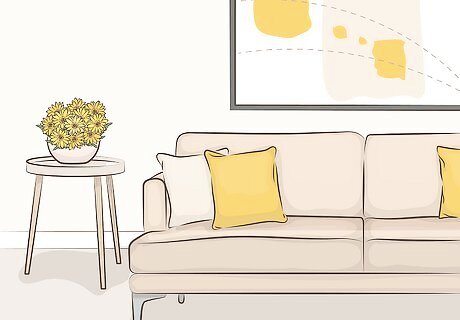
This will keep your accents cohesive. Part of the reason minimalism is so pleasing to the eye is because you're creating a unified space. If there's an accent you really love, see if there's an element you can pull from it to use somewhere else in the room. That way everything will feel like it naturally belongs together. For instance, if you have a chair with curved arms, you might bring in a round table, a circular wall mirror, and a curved sculpture or vase. If you love fresh yellow daisies, you might include a yellow bowl, yellow throw pillows, or a piece of art with yellow accents.
Create visual interest by mixing different textures.
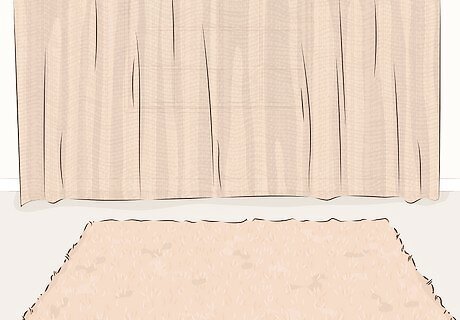
Texture can add variety to a monochromatic color scheme. Play with the texture of the linens, curtains, upholstery, rugs, or even the materials the room is constructed of, like the walls, floors, and countertops. This will give the room a lot of depth, but the cohesive color scheme will still make the space feel relaxing and minimalist. For instance, you might have tan curtains and a tan rug, but the curtains might be burlap and the rug might be a thick plush.
Choose thoughtful, interesting artwork.
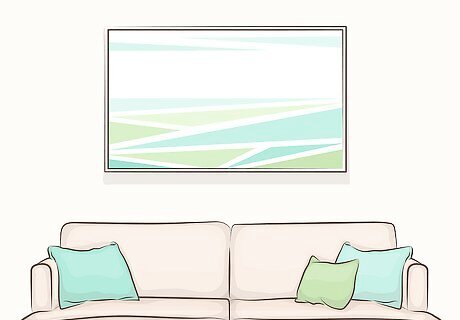
Surround your art with open space so it really stands out. Avoid filling up your walls or surfaces with decorative items just for the sake of having them—for a truly minimalist look, you should try to leave as much open wall or counter space as possible. However, it's fine to add decorative items as long as they're intentional, like something that really complements the rest of the room or an item that's very special to you. Geometric art and sculptures, house plants, throw pillows, mirrors, and candles are all popular in the minimalist aesthetic.
Brighten your space with cool light fixtures.

Replace boring fixtures with something architectural. In a minimalist room, there's nothing competing for your attention, so everything in the space has equal importance. Even something as seemingly mundane as a light fixture can make a huge impact in the room. Look for light fixtures with unique shapes, like geometric pendant lights, recessed lighting, or architectural chandeliers. Just avoid anything fussy or embellished, as it won't feel like it fits the space.
Choose quality items when you're shopping.
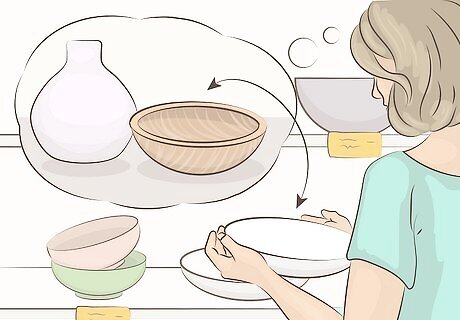
Look for well-made things that will last, and only buy what you need. To maintain your minimalist aesthetic, it's important to make thoughtful, intentional choices about what you bring into your home. Before you buy anything, ask yourself questions like, "Do I really need this?" "Is it useful?" and "Does this fit in with the rest of my home?" That will help you avoid ending up with clutter again. Consider implementing a one-in-one-out policy, meaning that every time you purchase something, you have to sell, donate, or throw away something you already own. Chip and Joanna Gaines Chip and Joanna Gaines, Remodel & Interior Design Experts Curate your own interior design aesthetic. "Filling a room with the things you think you should because you’ve seen someone else do it that way, or because you just want it to feel finished, will never yield a home you truly love. You can make a room feel both beautiful and complete without filling every corner and surface with a bunch of random stuff."
Create a capsule wardrobe to declutter your closet.
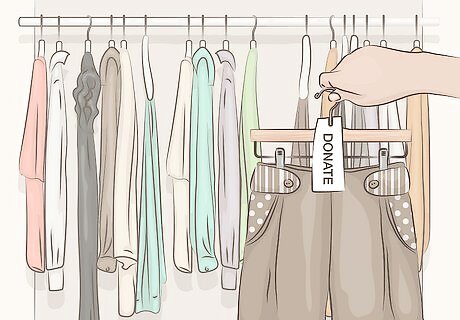
Get rid of anything you don't love. Go through your closet and sell or donate anything you don't wear regularly, or that doesn't fit the minimal aesthetic. Keep just a few pieces that you can mix and match with each other, called a capsule wardrobe. The less clothing you have, the easier it will be to grab something you love when you're getting dressed each day—and that simplicity is the whole point of minimalism. Not only will this make it easier to dress with a minimal aesthetic, but having a neat, uncluttered closet will start to bring the look into your home. Since the clothing you keep will be in heavy rotation, opt for well-made pieces over fast fashion when you're shopping in the future.
Dress in classic basics with clean lines.
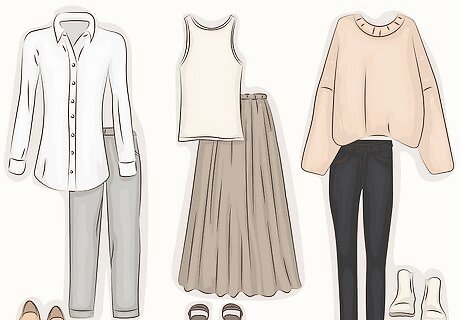
Try making minimalist outfits with clothing you already have. One of the easiest ways to start experimenting with a minimalist aesthetic is through your clothes. Go through your closet and mix and match a few simple basics in neutral colors—avoid anything with embellishments, patterns, or logos. Think streamlined, timeless classics. You might be surprised what you can come up with! For work, you could wear a tailored white button-down with slim-fitting slacks and a pair of loafers. On a summer day, go with a fitted cream-colored tank top, a long taupe skirt, and brown sandals. If the weather is cool, try a grey oversized rib-knit sweater, a pair of black skinny jeans, and black ankle boots. EXPERT TIP Alena Le Blanc Alena Le Blanc Personal Stylist Alena Le Blanc is the Personal Stylist and the Founder of Le Blanc Label. Based in San Francisco, California, Le Blanc Label is the leading personal stylist brand for sustainable style transformations. Alena and her team specialize in seasonal wardrobe refreshes, closet edits, styling for special events, travel, photoshoots, and general personal needs. Alena has been featured in podcasts including EMPOWERED BY WMN, I Am Fearless, and Mind Power Meets Mystic. Alena received her BFA in Fashion and Apparel Design from the Academy of Art University. Alena Le Blanc Alena Le Blanc Personal Stylist Build a minimalist wardrobe that never goes out of style. Minimalism thrives on classic silhouettes, clean lines, and high-quality fabrics. Invest in items like tailored blazers, white button-down shirts, and flowing linen skirts. Timeless and versatile pieces are building blocks for an effortlessly elegant style.
Wear simple jewelry that complements your clothing.
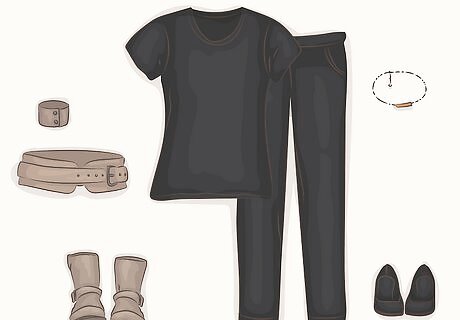
Accessories are a great way to add a fresh twist to your basics. Minimalism doesn't have to be boring. You can wear the same pieces in a number of different ways just by changing how you style them! Just stick to pieces that are fairly simple, with clean lines, geometric shapes, and neutral colors or metallics. For instance, if you're wearing a black T-shirt and black pants, you can add an edgy twist with a leather cuff bracelet, wide leather belt, and moto boots. On the other hand, you can dress up the same outfit by wearing it with black dress shoes and a dainty choker or a nice watch. Changing your hair and makeup can impact your style too—for the first look, you might tousle your hair, or you might wear it slicked back or in an updo for the second look.




















Comments
0 comment